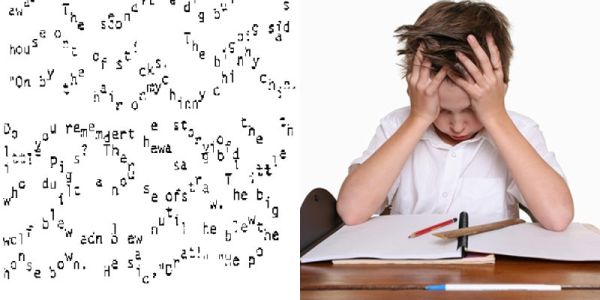
Dyslexia is a medical term defining learning disability in a person. A dyslexic individual finds it difficult to read and spell the words. This does not mean that the individual is not intelligent. There are many prodigies who struggled with dyslexia in the initial years of their lives. Normally, most of the children begin to read at the age of six, but there could be subjective variations, where some children gain learning skills as early as age four and some may take seven to eight years to attain learning skills. Some help and a lot of hard work helps children with dyslexia to read and spell words. Following are the signs and symptoms of a child who may be suffering from dyslexia.
Signs and symptoms
The signs and symptoms of dyslexia show variation with age and the severity of disorder. Although it is difficult to diagnose a child for dyslexia before school-going age, but there are a few signs which indicate that a child would suffer from dyslexia in the years to come. Following are some important signs:
-
Deferred speech development
-
Sluggish in learning new words
-
Trouble in remembering and following directions
-
Easily gets frustrated
-
Difficulty getting dressed, buttoning shirt and laying shoes on the right feet
-
Difficulty in calculations
-
Difficulty in catching, throwing or kicking a ball
-
Writing alphabets in reverse order (e.g. writing ‘ᴙ’ for ‘R’)
-
Difficulty following multiple instructions
-
Trouble learning rhymes
Once the child starts going to school, there are more prominent signs that indicate that the child is suffering from dyslexia. These signs are listed below.
Incongruity between the child’s actual achievement and ability
If you see a child behaving average or considerably intelligent while talking to you but seems struggling solving mathematical problems, reading or writing correct spellings, this is strongly indicative of the child suffering from dyslexia. A dyslexic child normally is quite able in the field of creativity (like art, drawing or painting) and activities involving physical co-ordination (like swimming or making models). Brain scans of dyslexic individuals show few links missing in the brain that makes it difficult for them to deal with words and numerals.
Difficulty in spelling words
One of the most difficult tasks for dyslexic children is to correctly spell words. Dyslexic children immediately attract attention due to the common and simple words spelled incorrectly. Examples of common words are any, many, friend, etc. The visual memory of the dyslexics is compromised because of which they find it difficult to remember the correct spelling. This could be the possible reason to explain their spelling errors like writing dus for does, nock for knock, pleeze for please and so on. Dyslexic children rely on the interpretation of sound than their visual memory to spell words.
Confusion over directions
Remembering and following directions is a very difficult task for dyslexics. Just a simple task of pointing your left feet with your right hand could be a great uphill task for a dyslexic. A dyslexic child finds it difficult in following the simple instructions like ‘Go straight and turn right and reaching the end turn left to reach the shop’. Due to lack of visual memory, remembering directions is difficult for such individuals.
Difficulty with mathematics
One of the important characteristic of a dyslexic child is their inability in sequencing and organizing things. This is the reason why simple mathematical calculation that requires easy sequencing, become a task of great difficulty for dyslexics. Even simple calculations like addition or multiplication can be very difficult for these individuals..
Struggle organizing themselves
Buttoning their shirt properly, organizing their school bag or even tying their shoe laces is a task which is difficult for the dyslexic child to accomplish without help. Planning ahead for another task, like when will the next book or pen be required, feels like a big task for such individuals.
Writing alphabets or numerals in reverse order
Visually similar but mirror images of the alphabets exchange places while writing words, like ‘d’ becomes ‘b’, ‘p’ becomes ‘9’ and vice versa. Identifying the correct alphabet or numeral to write a word is confusing for a child with dyslexia.
Difficulty in following multiple instructions
We normally understand and do the task using multiple instructions. A simple two step instruction like ‘Go to Mr. Smith and ask if Ms. Jade has come or not? And if Ms. Jade has come, then go to her and ask for her mathematics book’, confuses a dyslexic individual. This is because it is difficult to visualize the instructions and act accordingly.




